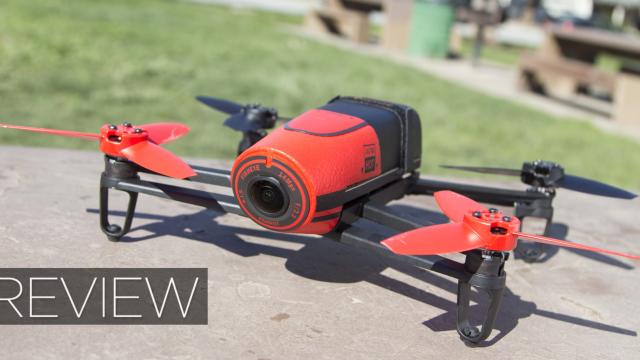You’ve graduated from your cheap beginner drone, and you want to try something new. Something that can shoot beautiful video from the sky — but doesn’t cost $1,000+ like a camera-equipped DJI Phantom. You spot the $US500 Parrot Bebop Drone, and pull the trigger. It’s kind of fun, you think, between strings of obscenities.
Specifications
- Processor: Parrot P7 dual-core CPU Cortex 9, Quad-core GPU
- Memory: 8GB
- Battery: 1200mAh
- Camera: 14-megapixel CMOS
- Connectivity: Dual-band MIMO 802.11 a/b/g/n/ac Wi-Fi
A remote control helicopter designed for recording aerial adventures. Way more compact than a DJI Phantom, with a 14-megapixel camera built right into the nose of the aircraft. There are two versions: a $US500 version you can only control with a tablet or phone, or a $US900 version that comes with a giant controller that adds real buttons and joysticks, serious range, and support for first-person view goggles. Either way, a bit of a pain to use.
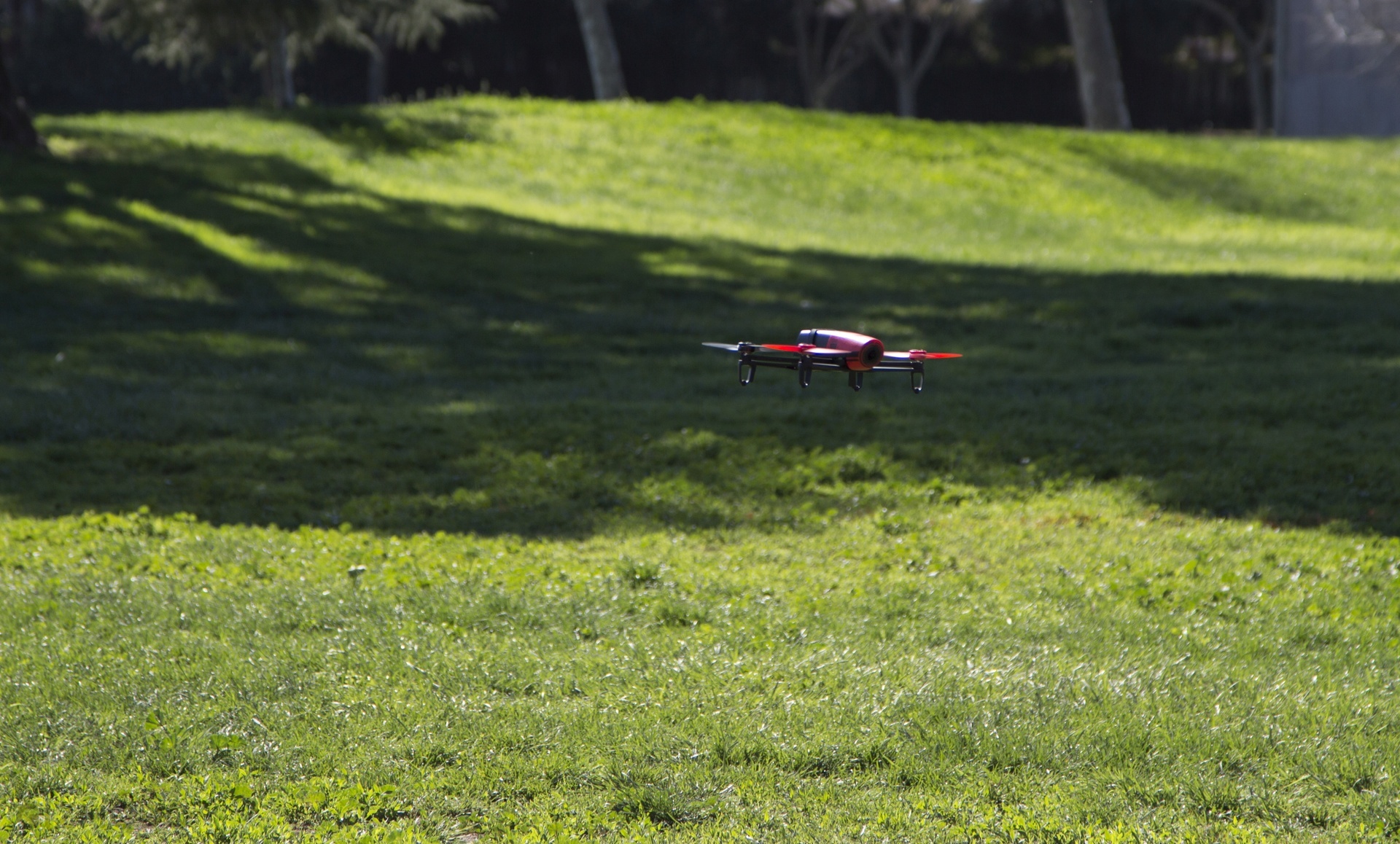
Design
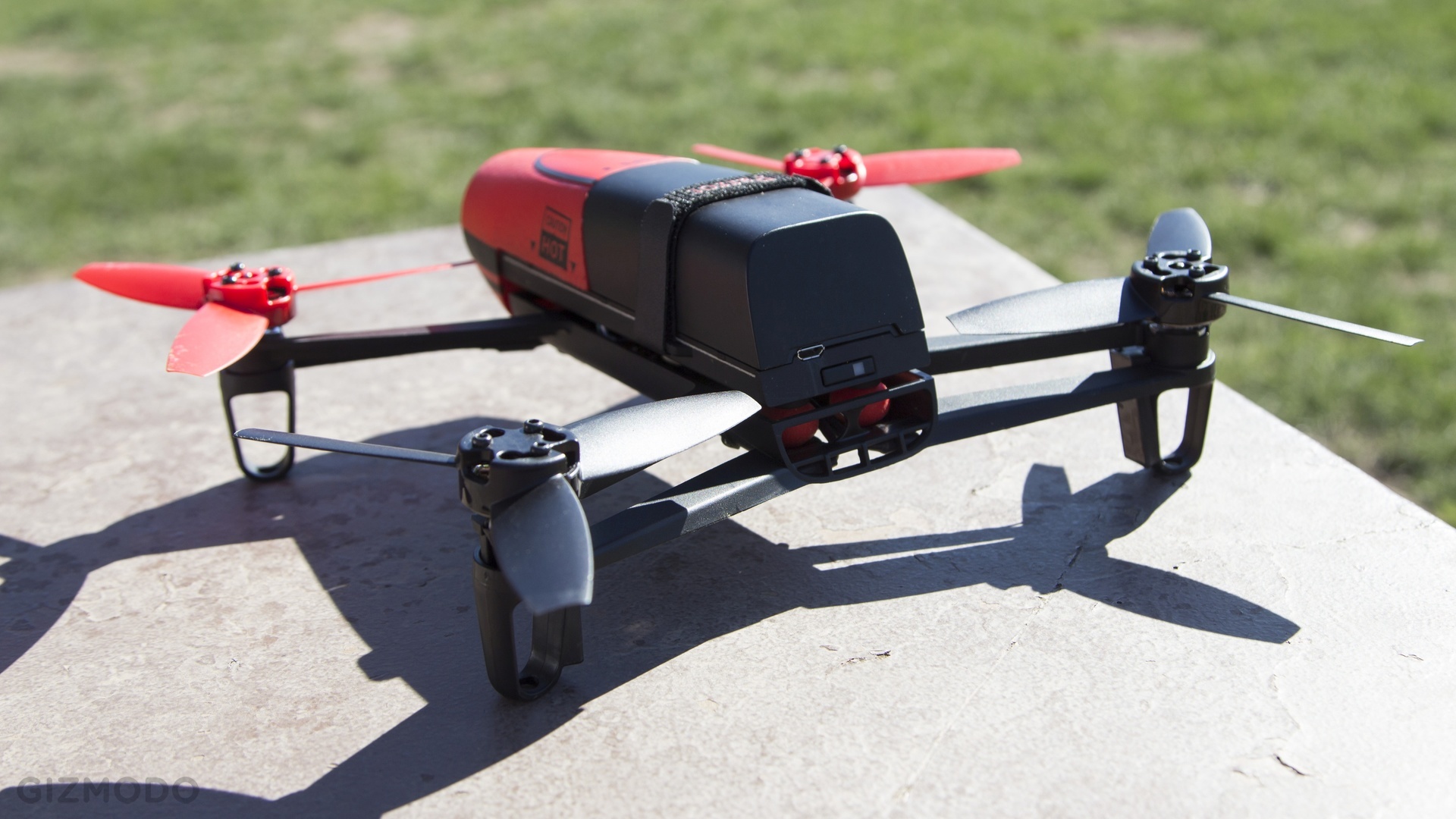
I’ll say this for the Bebop Drone: It looks pretty cool. Compact, streamlined, and made of strong yet flexible materials. From the foam cockpit to the guitar pick-like propellers, every part of the Bebop feels like it could easily survive a crash. (And has.) It’s also pretty cool the way the 14-megapixel camera is built right into the nose of the craft, and the way it’s stabilised on four red rubber balls integrated into the frame. Most camera drones have a big camera mount hanging from the bottom of the aircraft, and I’ve always thought those looked kind of ugly.
The optional foam bumpers are also pretty cool: they easily snap right onto the frame with just a quick squeeze, and you can keep them on when you put the Bebop back in its box.
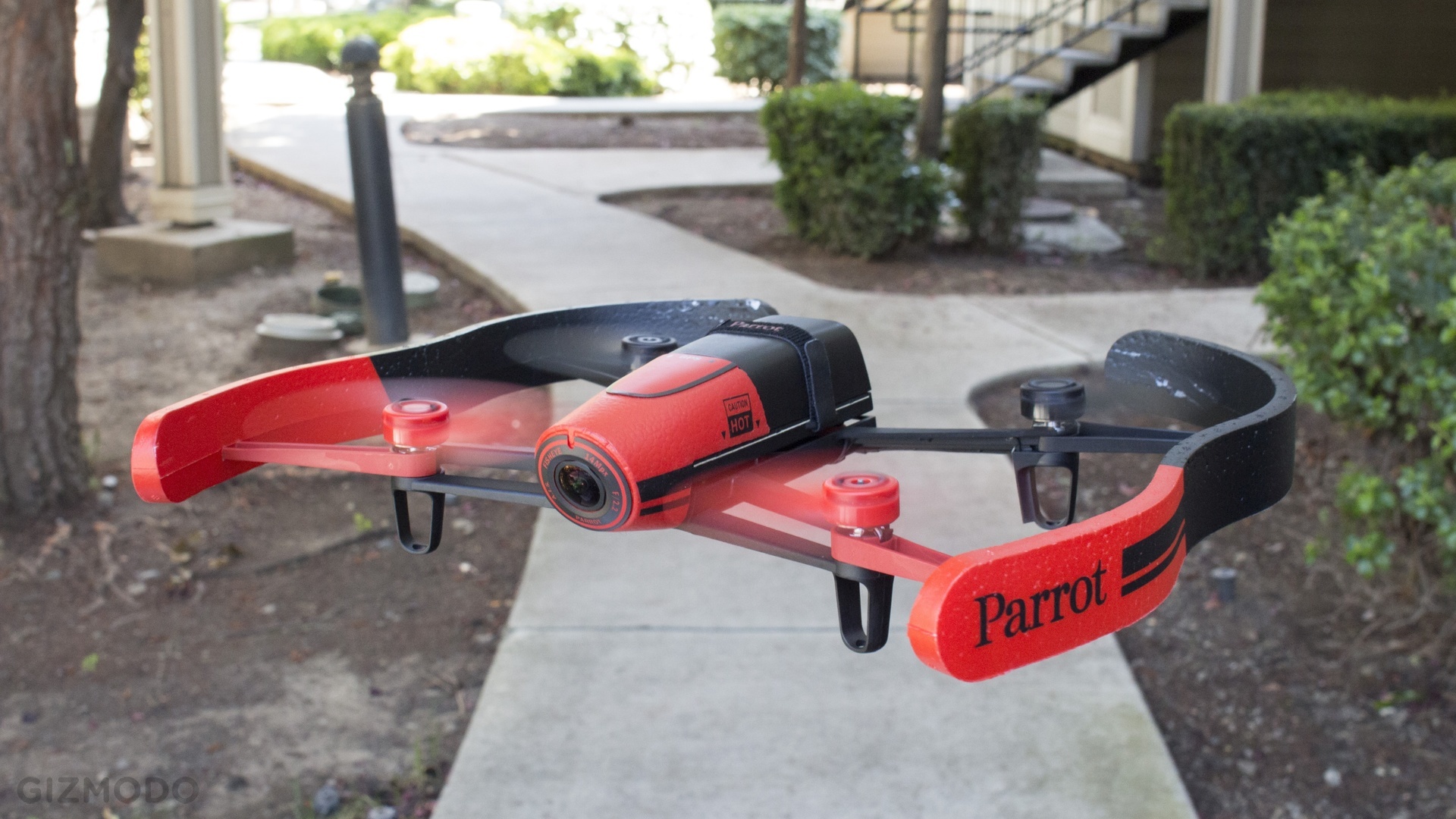
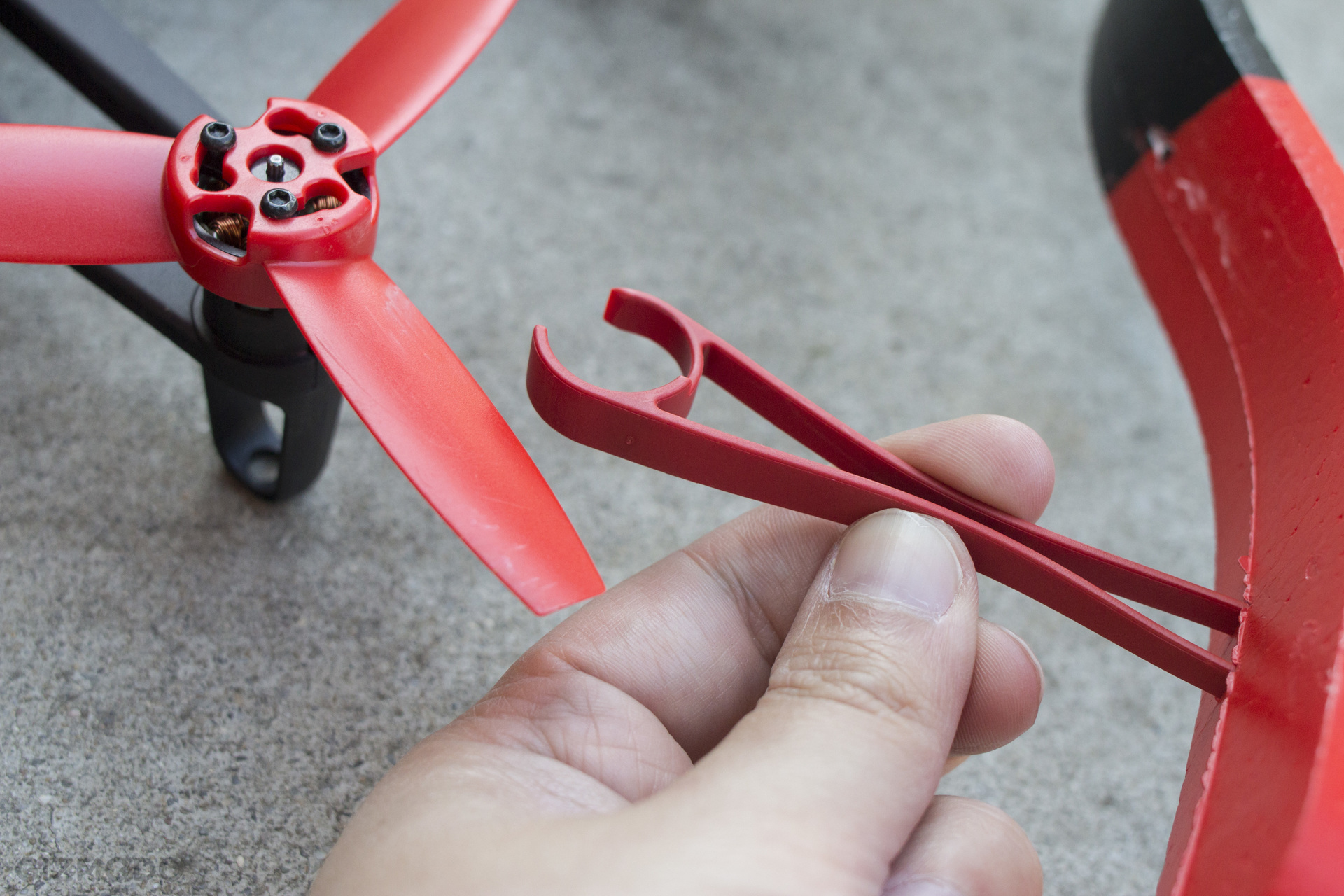
What isn’t so cool is the way the ring around the nose of that camera fell off the moment I lifted the drone out of the package. Or how I lost all four of the craft’s rubber feet after only a few landings. Or how, even properly strapped down, the battery never sits quite flush.
The optional Skycontroller is similarly a mixed bag. The very first time I pulled it out of the package, I nearly lost the power switch — it didn’t come glued down! It feels wonderful to have real joysticks, but on my unit, the one that controls the camera is sticky and hard to move.
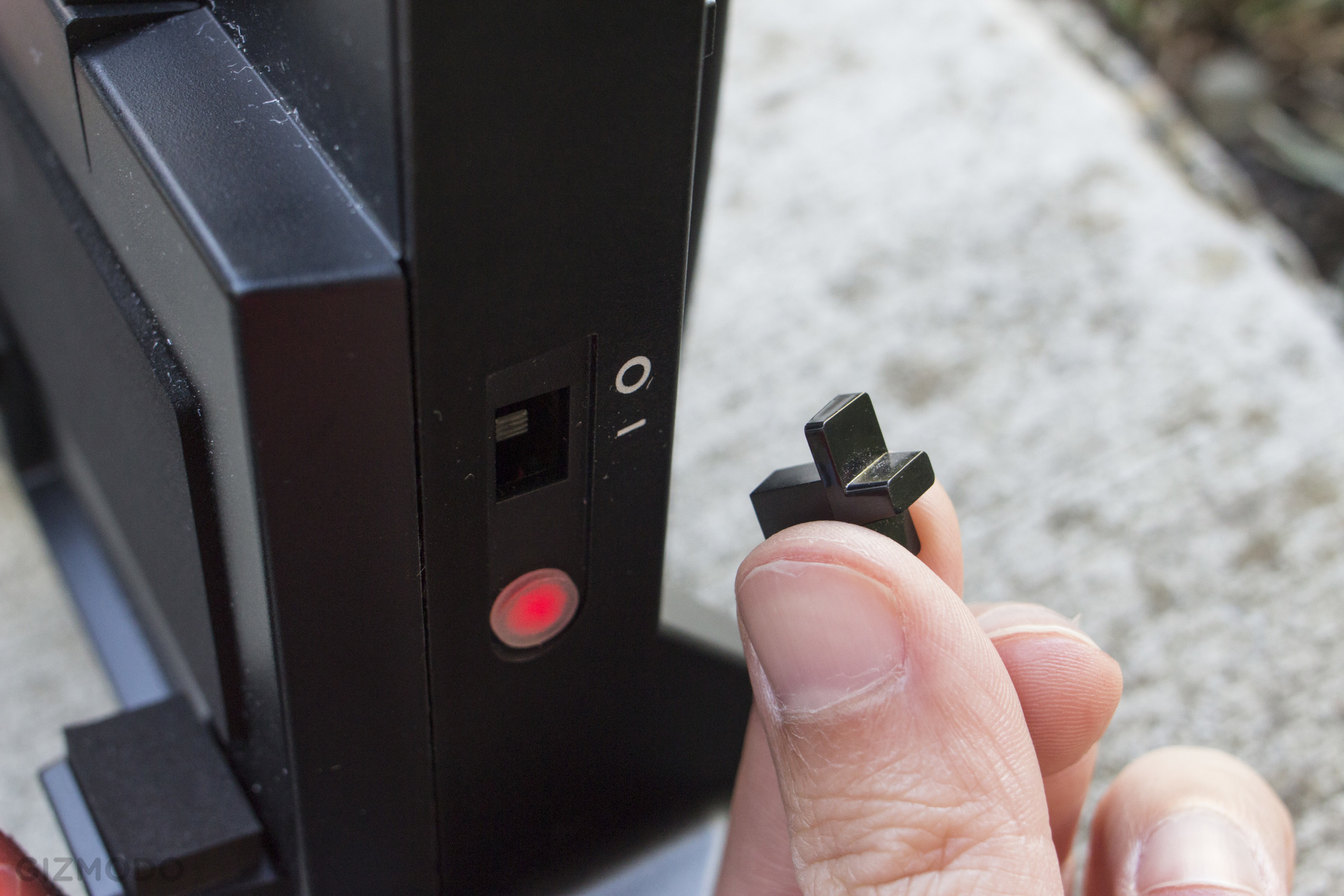
It’s super neat how the frame can stretch to accommodate anything from a full-sized iPad to my tiny (by today’s standards) Moto X smartphone. It’s awesome how those screens can serve as a real-time feed of what the camera sees. It’s a shame Parrot clearly didn’t consider that many phones have power and volume buttons on the sides that shouldn’t be clamped down, however. You know, because phones tend to do things when you press those buttons:
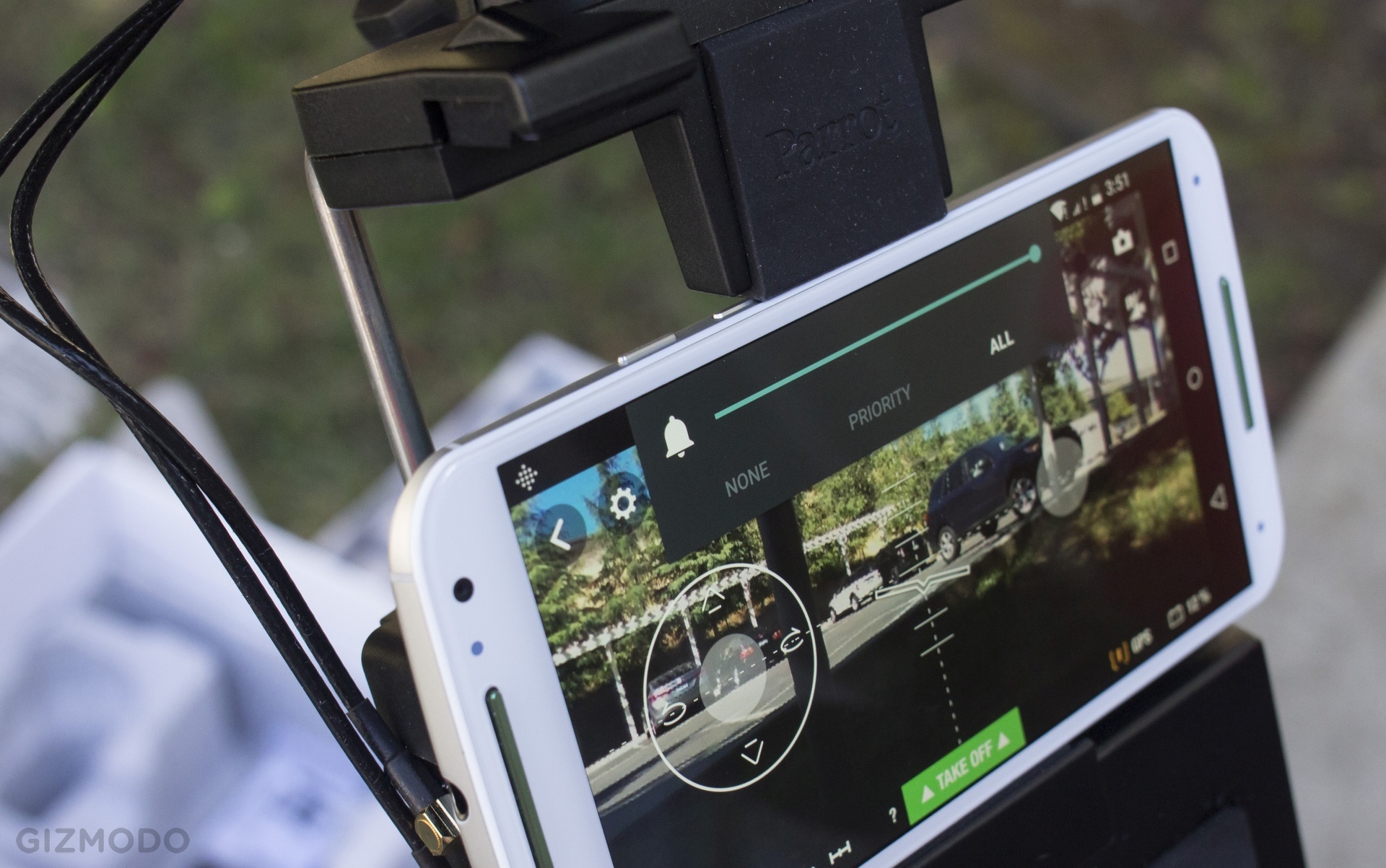
These were just my warning signs that the Bebop might be a little half-baked.
Using It
This is the key thing you need to understand about Parrot drones: All of them, the Bebop included, were designed to be flown with smartphones. More specifically, they’re designed to be flown with a very particular smartphone app. A ridiculously obtuse app that tries to double as a sales and marketing tool.
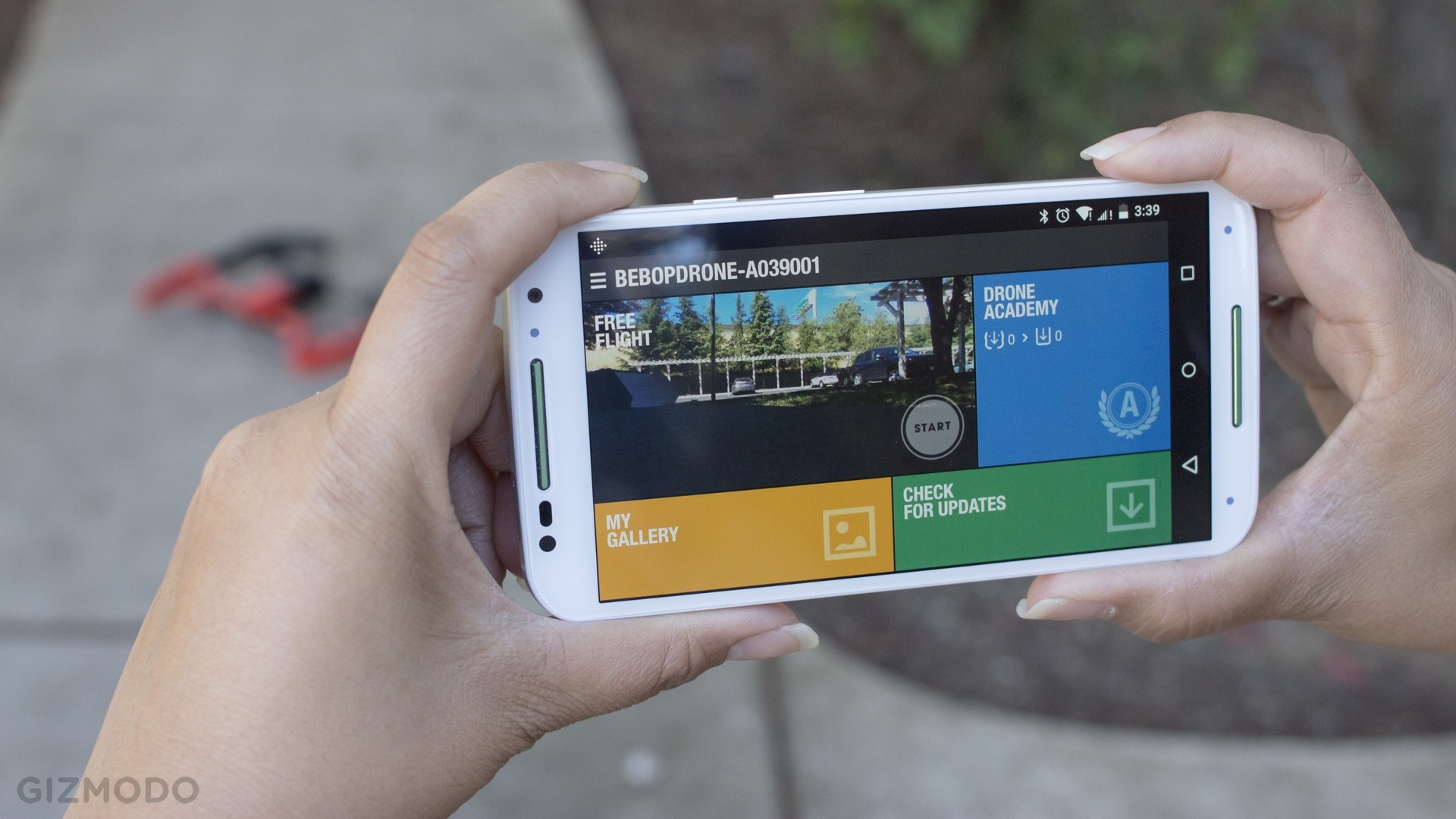
Why am I bringing this up? Because the first experience I had, almost every time I’ve turned on a Parrot drone, is a loooong delay while you wait for the app to realise that you actually own a drone and aren’t just interested in buying one. You have to wait for the app to kick itself into pairing mode and pair with your drone before you can actually fly it. To Parrot’s credit, it recently released an update that makes this process way faster, and lets you actually press a button (hidden in a menu, of course) to force the app and drone to pair.
But we’re still talking about a remarkably unreliable controller for an object that uses powerful blades to slice through the air. I’ve had the app crash on me, repeatedly, in the middle of a flight. I’ve had it lose connection, repeatedly, with the drone only a couple dozen feet away. And even though the Bebop can feel remarkably precise to control just by tilting a smartphone, I’ve also had it suddenly decide to fly away.
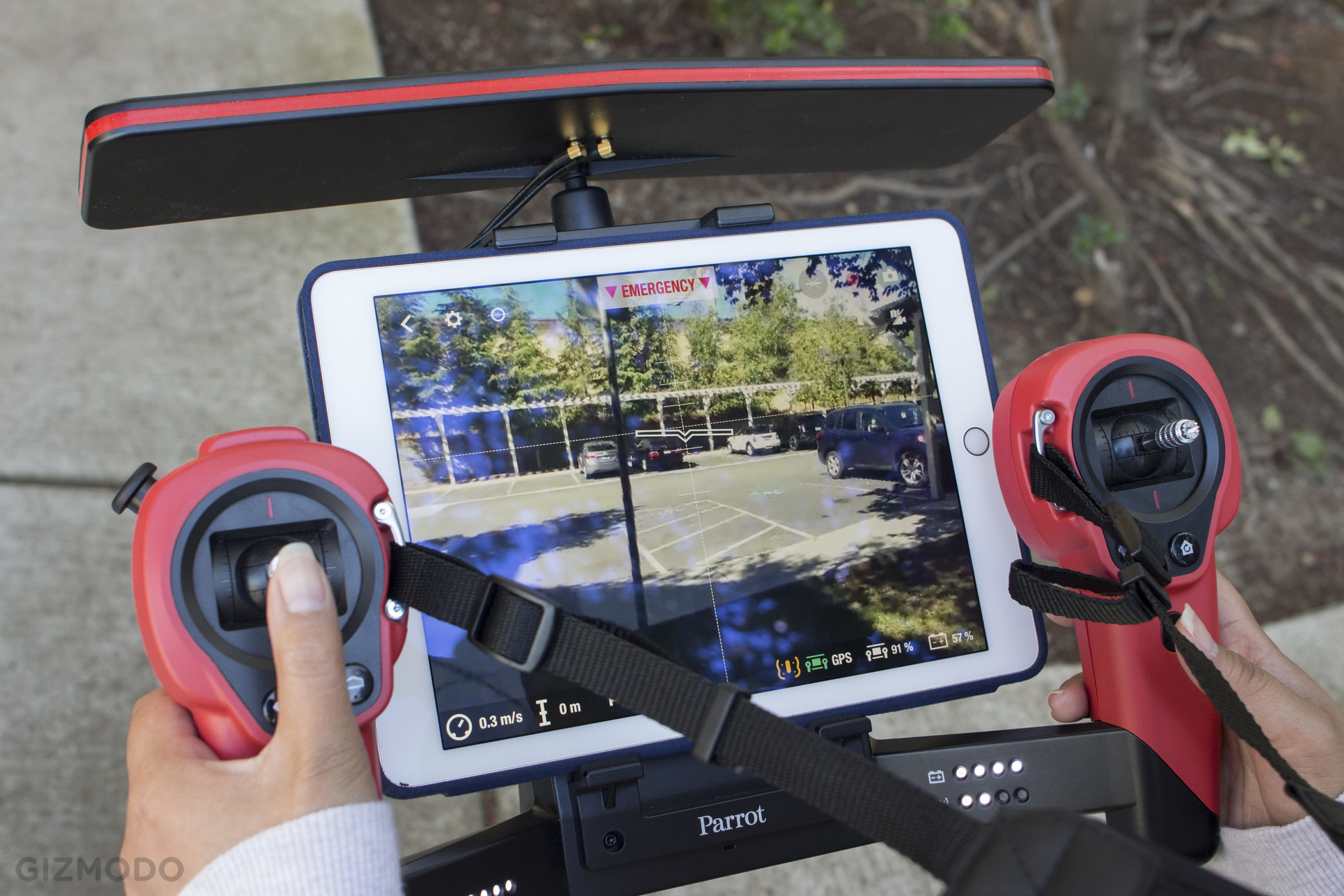
And surprisingly, the Skycontroller doesn’t make all those issues go away.
Most high-end drone remote controllers use radio signals to communicate directly with the aircraft. The moment you turn on both the drone and the controller, they’re paired. Not the Skycontroller — because under that plastic shell, the Skycontroller is literally an Android tablet. It uses the exact same app to control the drone. When you turn on the Skycontroller, you’re waiting for an Android device to boot up, as your battery life trickles out.
And even with all those wonderfully tactile controls, you’ll still need to use that app to get the drone to fly properly. It wasn’t clear to me at first — because Parrot’s app is a joke — but the craft actually has a whole bunch of hidden settings you’ll probably need to tweak to actually meaningfully fly around. The first few times I flew, I couldn’t understand why the craft was so slow to turn, so slow to climb, and why I couldn’t fly more than a few meters above the ground. Turns out that every new location you visit, you’ve got to swipe through pages of hidden menus in the app to confirm that yes, you really would like the drone to fly above head level.
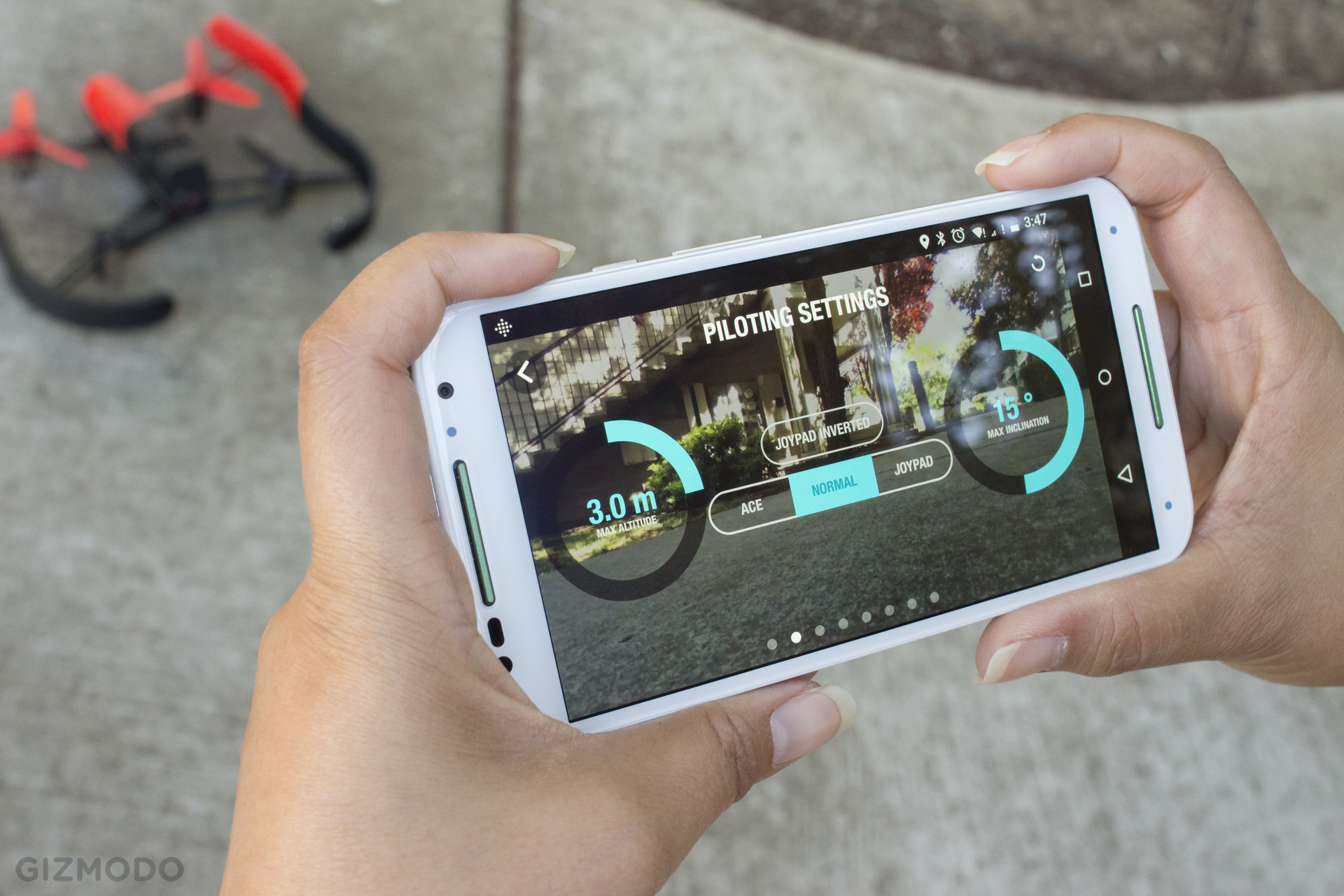
Once everything is actually in position and you’re momentarily done cursing Parrot’s name, the Bebop is actually pretty fun to fly. I tried it side by side with a DJI Phantom 2, and while it’s not quite as nimble, it’s surprisingly close. The DJI felt a little faster and more stable in the air, but I was able to chase it around with the Bebop just fine. The biggest differences — aside from the painful setup — are the camera, the battery life, and your ability to bring it home once you’ve flown it far enough that you can’t tell which way it’s pointing.
Let’s tackle these one at a time.
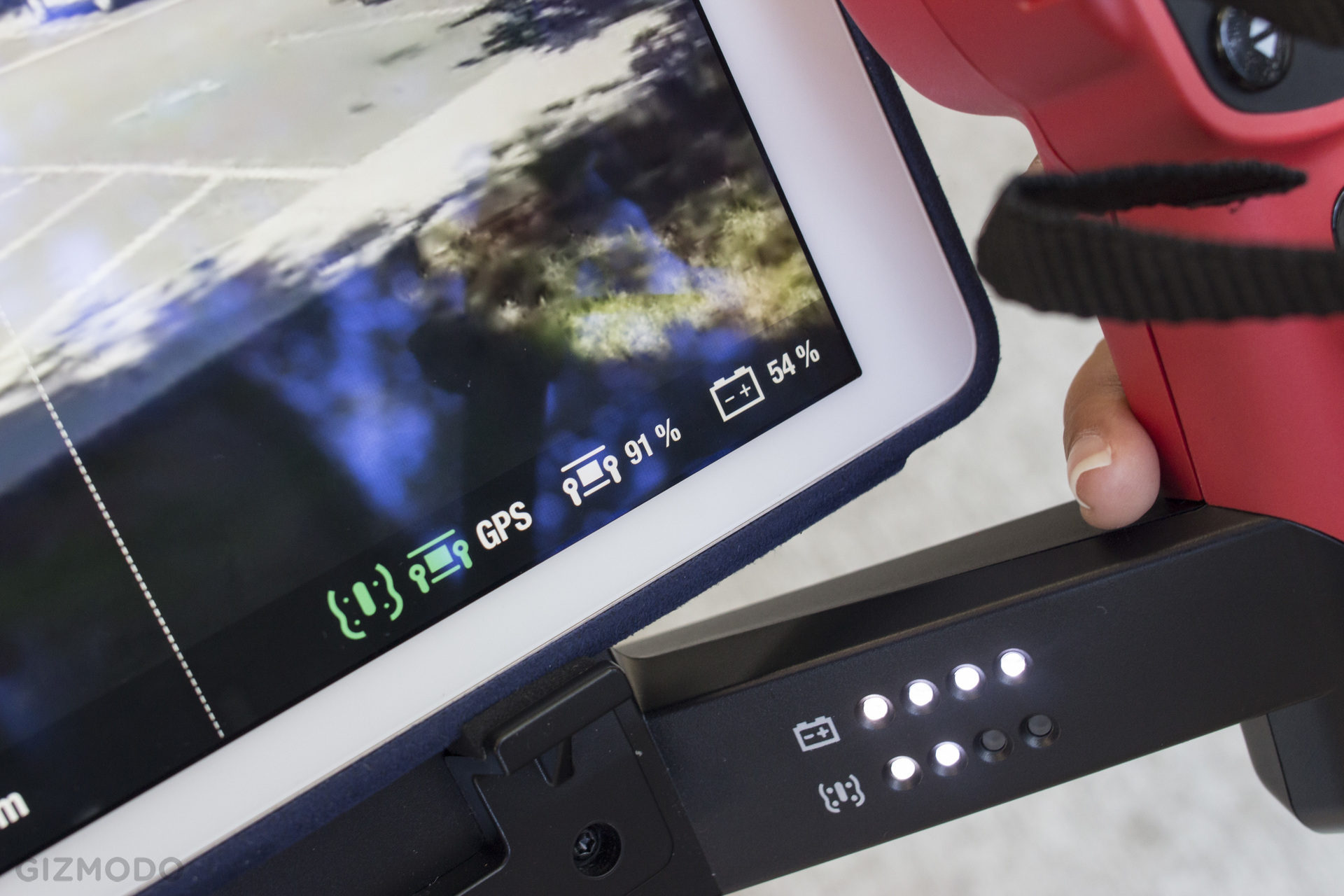
Battery Life
12-13 minutes tops. I typically was able to keep the Bebop in the air, with a live video feed, for 12 minutes after the pairing process. That’s a hell of a lot better than the 6-8 minutes you’d expect from a beginner drone, but pales in comparison to the 25 minutes you’ll get out of a DJI Phantom 2 or better.
And oh god does the Bebop’s battery drain fast at the end. When the DJI Phantom battery hit 10 per cent, I still had enough time for several runs around a large park before it warned me to head home. When the Bebop hit 10 per cent, I sent it out on a single run and it crash-landed on the return trip. The low battery warning sounded without enough life left to bring it home again.

Navigation
With a smartphone or tablet? Hahahaha. You can control it either with virtual joysticks or by tilting your phone in any direction. The farther you fly, the laggier the controls — and the greater the chance it will disconnect entirely from your phone.
Once you get out to the edge of your smartphone’s (likely pitiful) Wi-Fi range (maybe a couple hundred feet, but I’ve had it disconnect right in front of me!) the Bebop gets extremely laggy and unresponsive. Mostly, it will just hover wherever it winds up, without a care in the world, but you might not have a whole lot of battery life left to bring it back before it falls out of the air like a stone. If you really expect to buy the $US500 Bebop without a Skycontroller, maybe it’s not a good idea to fly above head level after all.
With a Skycontroller? Pretty comfortable out to surprisingly long ranges — but not nearly the 2km range that Parrot promises. In a giant open park with a direct line of sight, I didn’t even make it out half a kilometer before the video signal froze and my connection to the drone cut out — and since those two things happened at the same time, without warning, there was nothing I could do about it.

That’s typically where one of the coolest features of modern drones kick in — an autopilot that brings the drone home. And on one occasion, it saved my bacon. For a solid minute, the drone nearly a football field away from me, hovering dreadfully out of reach, I wasn’t sure it would work. But then, all of a sudden, it turned home. The Bebop flew straight back and landed right in front of me. Awesome.
And yet the very next time I needed that feature to work, at San Francisco’s Marina Green, it failed me completely. I was trying out some first-person view glasses, flying the drone from one end of the park to the other, marvelling at all the boats and all the people I could see below. Then, the headset image froze. The Wi-Fi disconnected, no control over the drone. It just sat in the sky, unresponsive. Minutes passed. Nothing. I ran, heart pounding in my chest, cables slapping against my thighs, headset dangling around my neck, worried what could happen. Would I find a drone hater stomping it to bits? A police officer ready to arrest me for filming? The drone simply gone, stolen? I ran. Out of breath, I found it sitting in a field, all alone. No one had even noticed it landing. But it could have just as easily happened over the San Francisco Bay, and that would have been the end of it.
Even at shorter ranges, though, you can get in trouble if you’re not carefully keeping track of which direction the drone is pointing. With the DJI Phantom, you can literally just flip a switch and then it will come back to you whenever you pull back on the analogue stick. With the Bebop, you’ve got to either keep the drone close enough that you can see the different colours of its propellers, hope the autopilot will work, or rely entirely on the streaming video feed.
Oh, and you know how Parrot promised the Bebop Drone would be able to fly from waypoint to waypoint just by tapping on several points on a map? That feature doesn’t exist.
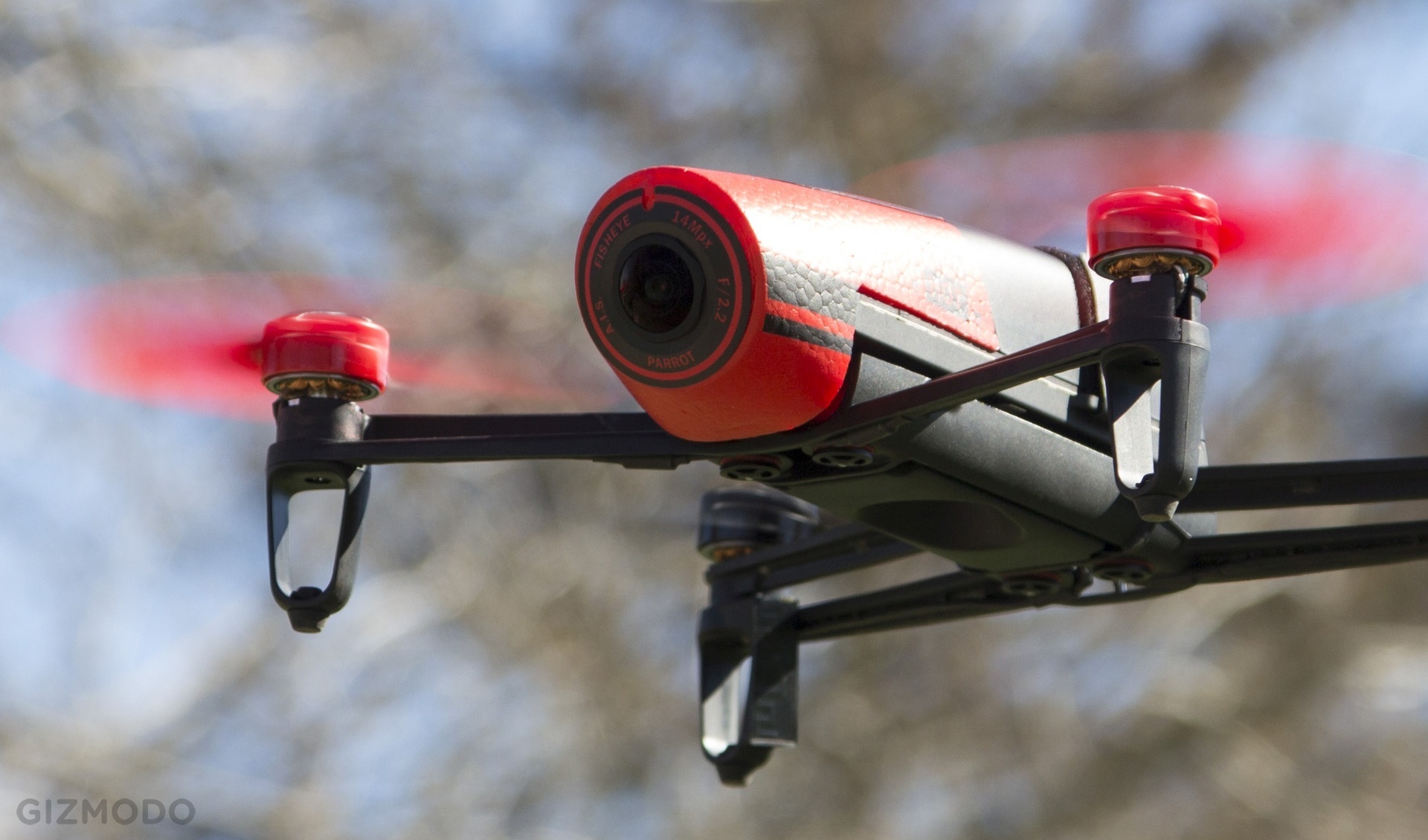
Camera
Theoretically, the coolest thing about the Bebop should be the camera built into its nose. It’s a fixed camera, but Parrot had the ingenious idea to use just a small portion of the giant fisheye image it provides at any given moment. You can digitally pan around the image using a separate analogue stick on the remote as if you had a real mechanical gimbal, and the software takes advantage of the unused pixels to digitally stabilise those images too.
Good news: the footage isn’t bad! Not GoPro quality, but good enough to share with friends and have them marvel at your skills. The stabilisation is particularly fine. You’d need a pricey gimbal to do that with other cameras.
Bad news: everything else Parrot promised doesn’t work particularly well. Even with a noisy cooling fan running full bore, the Bebop’s silicon struggles to produce a live feed. Though the Bebop can shoot 1080p video, you’ll only be getting a grainy, low-res 360p stream to your smartphone or tablet screen. It’s also really, really laggy to “move” the camera around, to the point I stopped bothering.
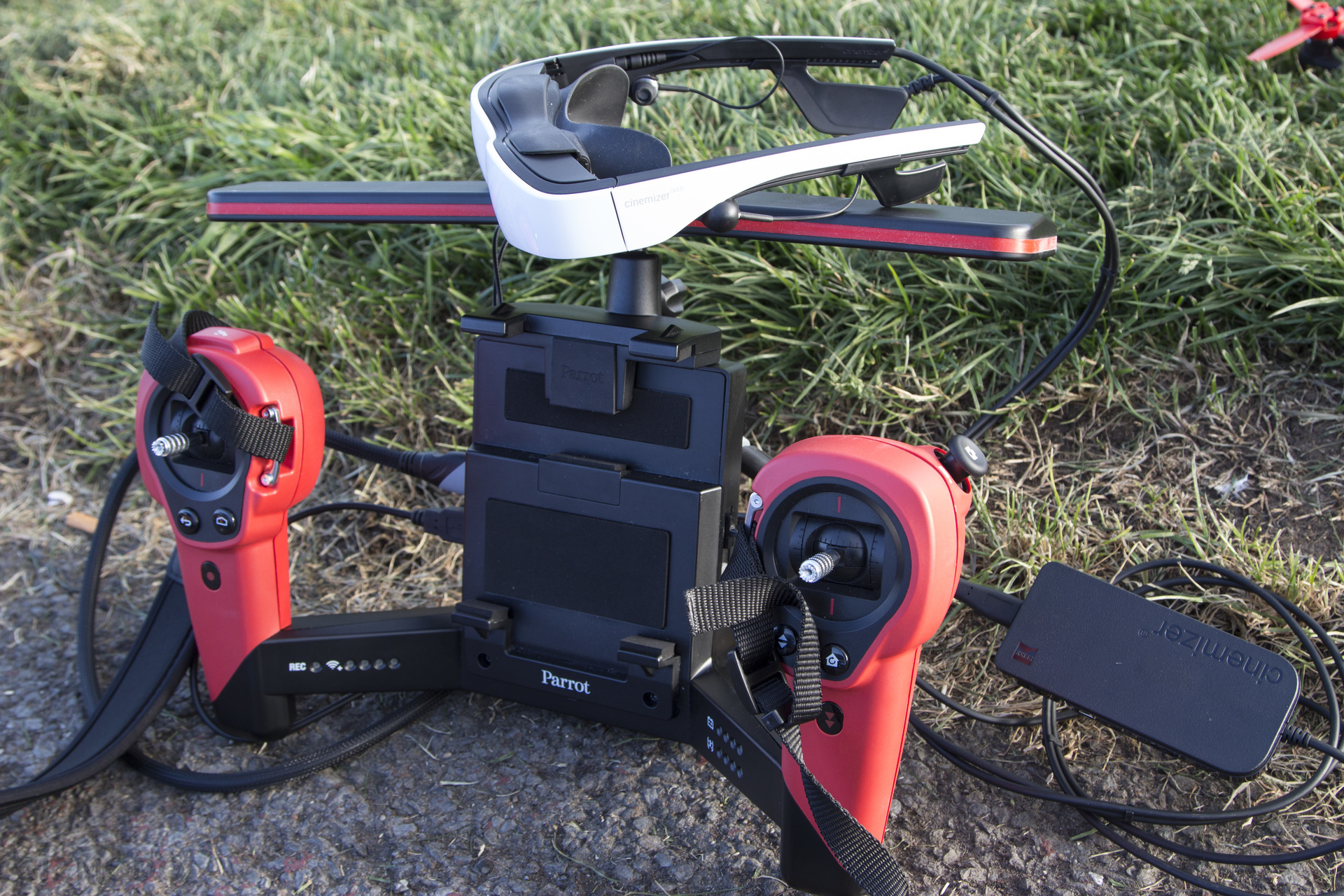
Which also makes it pretty useless for virtual reality headgear, since the camera can’t pan fast enough to keep up with your head movements. Not that you need to worry about that, considering that Parrot doesn’t actually support the Oculus Rift at all. Though the company originally advertised that the Skycontroller would support Oculus, there’s no such thing in the final product. All it does is mirror the app (and its live video feed) over an HDMI port.
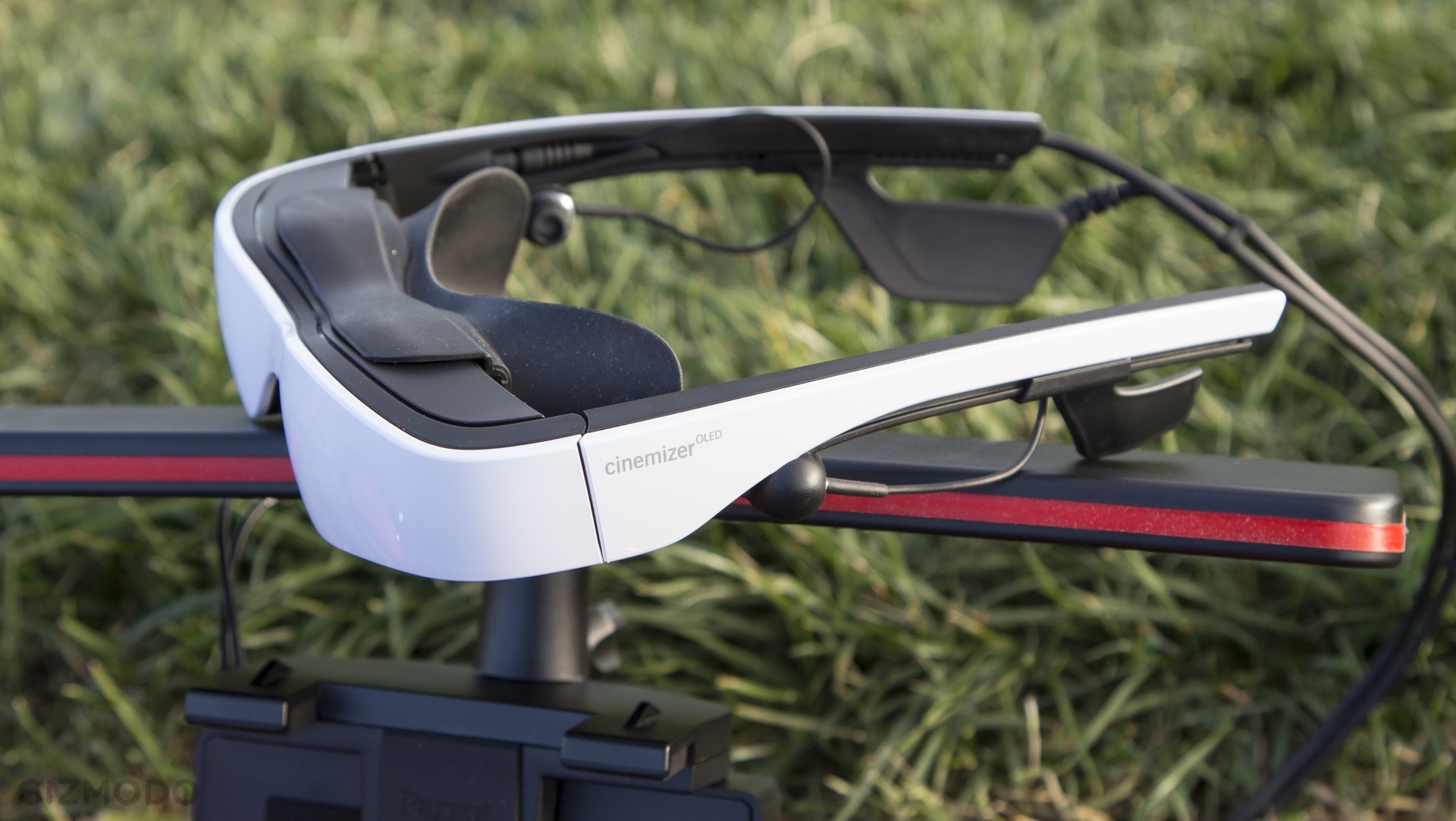
Parrot’s website claims that it also officially supports the Zeiss Cinemizer and Sony HMZ-T3 headsets, so I gave the Zeiss a go. I can’t say I was impressed. Loads of cables and adapters just to get the image to my eyes, and the headtracking didn’t work. Looked pretty cool, though.
At least once you bring the Bebop home with some footage, it looks pretty good.
Like
It’s ready to fly out of the box. No need to piece it together or even screw on propellers. Just charge up batteries, download an app, and you’re good to go.
Compact and looks cool.
The Skycontroller package deal comes with three batteries, which work with both the Bebop and its controller. Sadly, once the Bebop drained my batteries, they didn’t have enough charge left to power the remote. So don’t expect to swap them in and out of the controller.
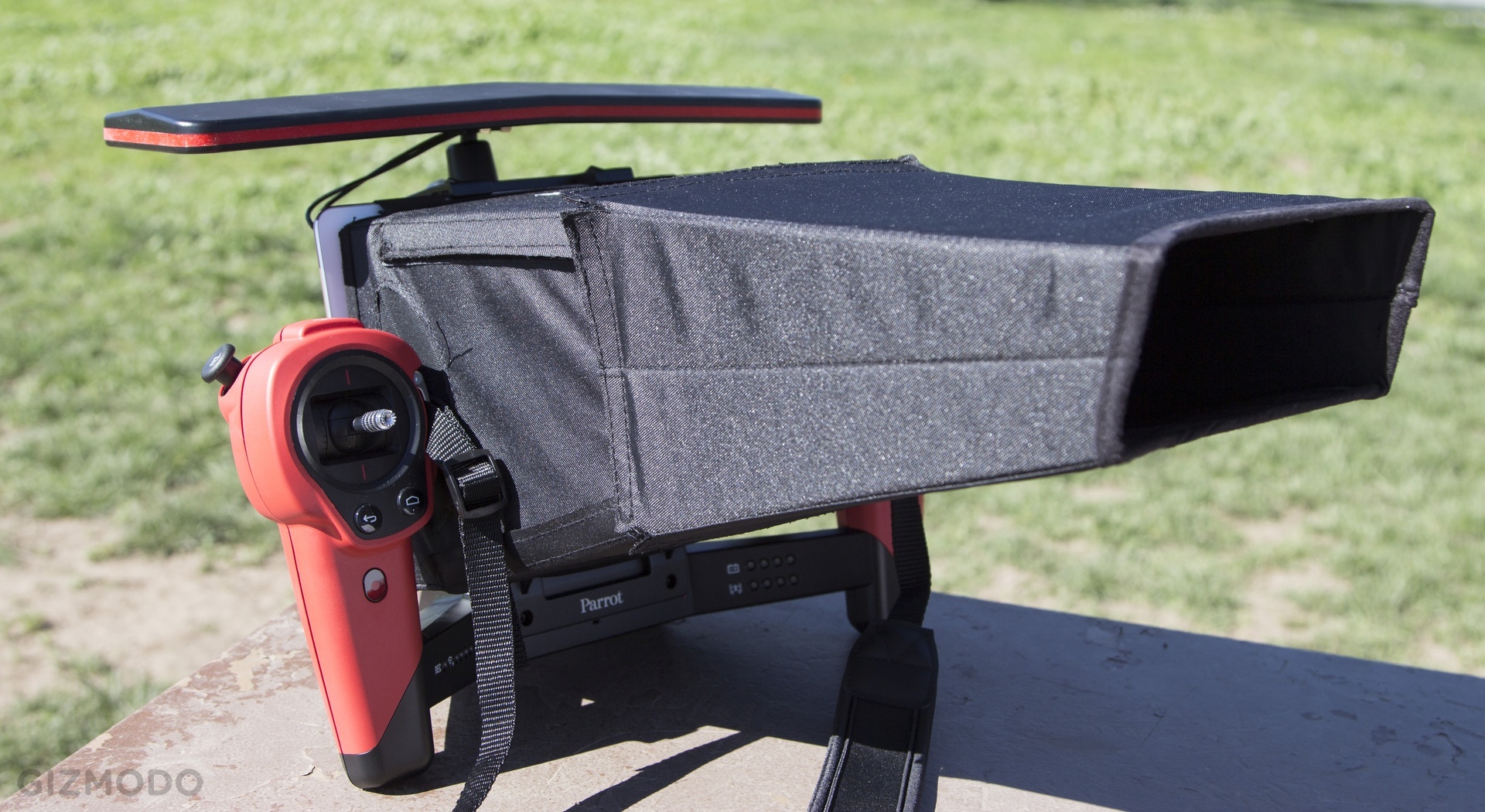
The Skycontroller can stand upright on a table, and comes with a handy folding shade to keep your iPad screen glare-free in bright light.
I found the Bebop thrilling to fly… when it was flying correctly and I wasn’t muttering curses.
No Like
Relying on Android, consumer-grade Wi-Fi, and a terribly unintuitive app, this drone was a pain in the arse to use.
The Bebop runs out of space for video quickly, without warning, and you’ve got to have the drone powered on (draining your battery) in order to access that footage and delete it.
So many of my dreams dashed for what this drone could do.
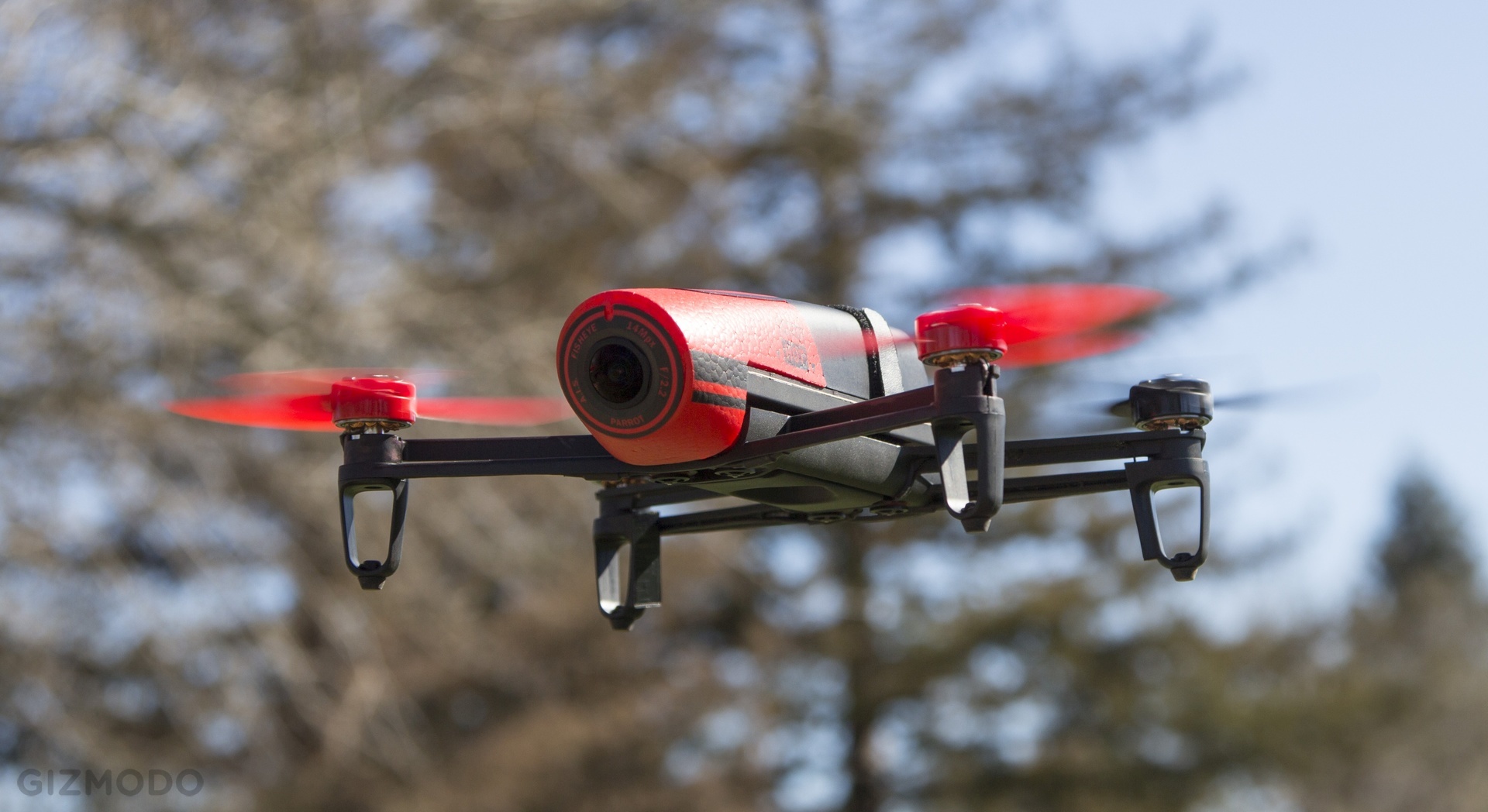
Should You Buy It?
Parrot Bebop DronePrice: $1299.95
No. The Bebop can be fun, but it’s not worth the trouble.
Not for $500, certainly, where you can only control it with your smartphone, and not for $900 when you’ll soon be able to buy a fully loaded DJI Phantom 3 including camera and gimbal for just $100 more. Hell, if you’re willing to sacrifice the camera or add one yourself later, you can find the Phantom 2 for under $600 these days.
You can even buy one with a gimbal for $700 and change.
There are a lot of great ideas in the Bebop Drone, but Parrot couldn’t pull them off, and I don’t trust that they magically will in software updates down the road. And even if they did, it’s too late for the Bebop to be competitive at a price you’d pay for it.
